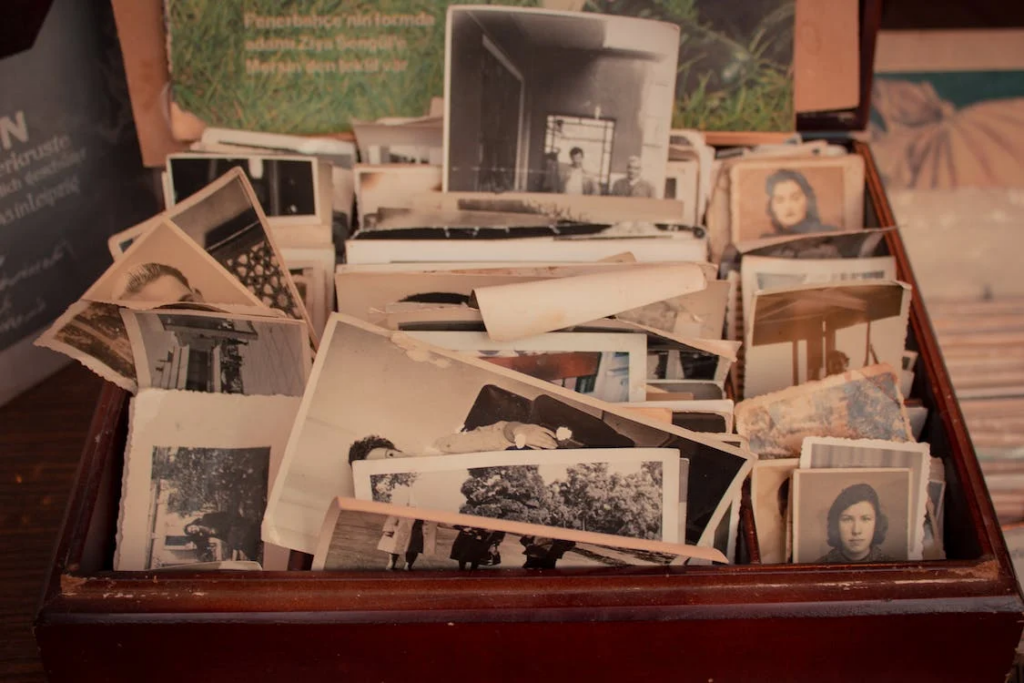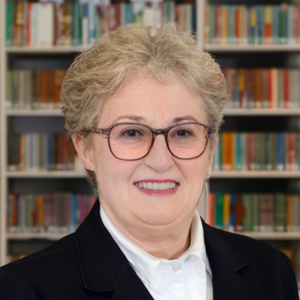Memories are the threads that weave the tapestry of our lives, connecting us to our past and shaping our future. Photos, in particular, serve as visual reminders of the moments we’ve shared with loved ones, the places we’ve been, and the experiences that have left a lasting impact on our hearts. But with time, these treasured photos can become damaged, faded, or even lost, threatening to erase the precious memories they hold.
Thankfully, photo restoration techniques have come a long way in recent years, offering hope for those looking to breathe new life into their damaged or deteriorating photographs. In this blog post, we will explore the importance of preserving memories and provide an overview of some of the most effective photo restoration techniques available today. Whether you’re a seasoned professional or just starting to explore the world of photo restoration, we hope this guide will inspire you to take action and protect your cherished memories for generations to come.
The Art of Photo Restoration
Brief History of Photo Restoration
The art of photo restoration has evolved over the years, tracing its roots back to the early days of photography itself. In the 19th century, when photography was still in its infancy, the first photographers and their clients quickly realized that their prized images were susceptible to damage, fading, and deterioration. Skilled artists and craftsmen would painstakingly retouch and repair damaged photos by hand, often using brushes, pencils, and other tools to fill in missing details, repair scratches, and fix discoloration.
As technology advanced, so too did the techniques used in photo restoration. The advent of digital photography and image editing software revolutionized the field, allowing for more precise and efficient restoration work. Today, professional photo restorers and hobbyists alike can use sophisticated tools like Photoshop and other specialized software to restore damaged photos with incredible accuracy, bringing new life to images that were once thought to be beyond repair.

Why Photo Restoration is Essential
Photo restoration is more than just a way to salvage damaged or deteriorating photographs; it’s an essential practice that helps us preserve our personal and collective history. By restoring old photos, we can:
- Reconnect with our past: Restoring photos allows us to revisit cherished memories, rekindle relationships, and gain a deeper understanding of our family history.
- Share our stories: Memories are meant to be shared, and photo restoration enables us to pass on our experiences, traditions, and values to future generations.
- Protect our legacy: Our photos are visual representations of our lives and achievements. Restoring and preserving them ensures that our legacy will endure for years to come.
- Celebrate our heritage: Photo restoration helps us honor and celebrate the rich tapestry of our cultural and historical heritage, providing a window into the lives of those who came before us.
In essence, photo restoration is a vital tool in preserving our personal and shared history, allowing us to maintain an emotional connection with our past and ensuring that the stories and memories we hold dear are never lost.
Understanding the Types of Damage
Before diving into photo restoration techniques, it’s important to understand the various types of damage that can affect your photographs. By identifying the specific issues affecting your images, you can choose the most appropriate restoration methods to address them.
Physical Damage (Scratches, Tears, and Creases)
Physical damage is one of the most common problems that can affect your photos. This includes scratches, tears, creases, and other surface imperfections caused by mishandling, improper storage, or accidents. Physical damage can detract from the overall appearance of your images, making it difficult to enjoy the memories they hold.
Get Your Photos Restored Today!
Discover the beauty of your old memories and get your photos restored today! Bring those moments back to life with our easy and convenient restoration service.
Water Damage
Water damage is another common issue that can wreak havoc on your precious photographs. Whether it’s due to flooding, a leaky roof, or a spilled drink, water can cause your photos to stick together, warp, or become discolored. In severe cases, water damage can lead to the complete loss of your images.
Fading and Discoloration
Over time, exposure to light, heat, and air can cause your photos to fade or become discolored. This gradual deterioration can make your images appear washed out, less vibrant, or even unrecognizable. Fading and discoloration can be particularly problematic for older photographs, which were often printed using less stable processes and materials.
Mold and Mildew
High humidity and damp conditions can lead to the growth of mold and mildew on your photographs. These harmful organisms can cause permanent staining, eat away at the emulsion layer, and produce a musty odor. If left untreated, mold and mildew can eventually destroy your photos beyond repair.
Fire and Smoke Damage
Fire and smoke can cause severe damage to your photographs, leaving them charred, smudged, or covered in soot. Even if your photos aren’t directly exposed to flames, the heat and smoke from a nearby fire can still cause significant harm. In some cases, fire and smoke damage may be too extensive to fully restore the image, but partial restoration may still be possible.
By understanding the different types of damage that can affect your photos, you’ll be better equipped to choose the appropriate restoration techniques and preserve your cherished memories for future generations.
Basic Photo Restoration Techniques
If your photographs have sustained minor damage, you may be able to restore them using some basic photo restoration techniques. These methods can help you address common issues like surface imperfections, small tears, stains, and fading.

Cleaning and Surface Repair
Before attempting any further restoration work, it’s essential to clean your photographs gently to remove dirt, dust, and other debris. Make sure your hands are clean and dry, and use a soft brush or lint-free cloth to carefully wipe away any loose particles. For more stubborn dirt, you can use a small amount of distilled water or specialized cleaning solution applied to a cotton swab.
Once your photos are clean, you can address minor surface damage like scratches and creases. Using a fine-tipped brush and matching paint or ink, carefully fill in any imperfections to create a smoother, more uniform appearance.
Reattaching Torn Pieces
If your photograph has been torn into multiple pieces, you’ll need to reattach them before proceeding with further restoration. To do this, carefully align the torn edges and use a small amount of acid-free adhesive to secure them in place. Alternatively, you can use specialized photo-safe tape to join the pieces from the back, making sure not to cover any important details.
Removing Stains and Discoloration
Stains and discoloration can detract from the overall appearance of your photographs, but they can often be removed with the right approach. For mild staining, try using a soft eraser or specialized cleaning solution to gently lift the stain from the surface. For more severe discoloration, you may need to consult a professional restorer or explore digital restoration techniques.
Fixing Fading and Color Balance
Over time, your photographs may lose their original vibrancy and color balance, making them appear dull or washed out. To correct these issues, you can experiment with color adjustment tools in photo editing software like Photoshop. Adjust the brightness, contrast, and saturation levels to bring out the original colors and detail in your image. You can also use color balance tools to correct any shifts in hue that may have occurred over time.
Get Your Photos Restored Today!
Discover the beauty of your old memories and get your photos restored today! Bring those moments back to life with our easy and convenient restoration service.
Advanced Photo Restoration Techniques
For more complex or extensive damage, advanced photo restoration techniques may be necessary. These methods often involve digital tools and specialized skills to help bring your photographs back to their original condition.
Digital Restoration Tools and Software
Digital restoration has become increasingly popular in recent years, thanks to the powerful tools and software available to both professionals and hobbyists. Programs like Adobe Photoshop, GIMP, and Affinity Photo provide a wide range of features that can be used to restore damaged photos with remarkable precision.
Some common digital restoration techniques include:
- Cloning and healing tools: These tools allow you to “paint” over scratches, stains, and other imperfections by sampling nearby areas of the image and replicating their appearance.
- Noise reduction and sharpening filters: These filters can help reduce the appearance of graininess or blurriness in your photographs, bringing out the finer details and improving overall clarity.
- Layer masks and adjustment layers: By using layer masks and adjustment layers, you can apply targeted edits to specific areas of your image without affecting the rest of the photograph.
With practice and patience, digital restoration tools can be used to address a wide variety of issues and create stunning results.
Working with Damaged Negatives and Slides
If your original negatives or slides have been damaged, it may still be possible to restore the images they contain. First, you’ll need to digitize the negatives or slides using a high-quality scanner or specialized film conversion service. Once you have a digital copy of the image, you can use photo editing software to correct any damage or imperfections present on the original film.
In some cases, working with damaged negatives and slides can actually yield better results than attempting to restore printed photographs, as the original film often contains more detail and a wider dynamic range.

Restoring Severely Damaged Photos
In situations where a photograph has sustained extensive damage, traditional restoration techniques may not be sufficient. In these cases, it may be necessary to consult a professional photo restoration expert who can employ advanced techniques and specialized equipment to salvage the image.
Professional restorers may use a combination of digital and traditional methods to address severe damage, including:
- Reconstructing missing or destroyed areas of the image using reference photos or artistic interpretation.
- Employing advanced color correction techniques to restore the original appearance of the photograph.
- Using high-resolution scanning and printing technology to create a new, restored version of the image.
While restoring severely damaged photos can be challenging and time-consuming, the results can be truly remarkable, allowing you to reclaim cherished memories that might otherwise have been lost.
By exploring advanced photo restoration techniques and seeking the help of professionals when necessary, you can ensure that your most treasured photographs are preserved for future generations to enjoy.
Tips for Proper Photo Storage
One of the best ways to preserve your cherished memories is to ensure that your photographs are stored correctly. By taking a few simple precautions and following best practices, you can help prevent damage and deterioration, keeping your photos looking their best for years to come.
Choosing the Right Storage Materials
When storing your photographs, it’s essential to choose archival-quality materials that will protect your images from damage. Look for storage solutions that are acid-free, lignin-free, and PVC-free, as these materials will not release harmful chemicals that can cause your photos to deteriorate over time. Some options include:
- Archival photo albums or boxes: These products are specifically designed to store and protect photographs, providing a safe and organized way to keep your memories in pristine condition.
- Acid-free envelopes or sleeves: If you prefer to store your photos individually, consider using acid-free envelopes or sleeves to protect them from dust, dirt, and other contaminants.
- Mylar or polyester enclosures: For particularly valuable or delicate photographs, you may want to invest in Mylar or polyester enclosures, which offer superior protection against moisture, light, and other environmental factors.
Storing in Optimal Conditions
The conditions in which you store your photographs can have a significant impact on their longevity. To minimize the risk of damage and deterioration, follow these guidelines:
- Keep your photos away from direct sunlight, as exposure to UV rays can cause fading and discoloration.
- Maintain a stable temperature and humidity level. Ideally, your photos should be stored in a cool, dry environment with a temperature of around 65°F (18°C) and a relative humidity of 30-40%.
- Avoid storing your photos in basements, attics, or garages, where they may be exposed to fluctuating temperatures, moisture, or pests.
- Store your photos in a clean, smoke-free environment to prevent the buildup of dirt, dust, and harmful pollutants.
Regular Maintenance and Care
Finally, it’s essential to inspect and clean your photographs regularly to ensure they remain in good condition. Here are some tips for proper photo maintenance:
- Handle your photos with clean, dry hands to prevent the transfer of oils and dirt.
- Use a soft brush or lint-free cloth to gently remove any dust or debris from the surface of your photographs.
- Keep an eye out for signs of damage or deterioration, such as fading, discoloration, or the presence of mold or mildew. If you notice any issues, take immediate action to address them or consult a professional restorer.
By following these tips for proper photo storage, you can help protect your cherished memories and ensure that they remain vibrant and beautiful for generations to come.
When to Seek Professional Help
While DIY photo restoration techniques can be effective for addressing minor damage, there may come a time when professional assistance is necessary. Knowing when to seek help from an expert can make all the difference in preserving your cherished memories.

Recognizing When DIY Restoration Isn’t Enough
There are several situations where you might need to consult a professional photo restorer, including:
- Severe damage: If your photographs have sustained extensive damage, such as large tears, significant water or fire damage, or widespread mold growth, a professional restorer will have the advanced skills and equipment needed to salvage your images.
- Valuable or historical photographs: For particularly valuable, rare, or historically significant images, it’s essential to enlist the help of a professional to ensure the highest level of care and preservation.
- Inadequate results: If you’ve attempted DIY restoration but are not satisfied with the results, a professional may be able to provide a more polished and accurate restoration.
How to Find a Reputable Photo Restoration Service
When looking for a professional photo restoration service, consider the following tips to help you make the right choice:
- Research: Start by conducting online research to find photo restoration services in your area or those who offer remote services. Look for reviews and testimonials from previous clients to gauge their reputation and the quality of their work.
- Ask for recommendations: Reach out to friends, family members, or local photography groups for recommendations. They may have personal experience with a reputable restorer or know someone who does.
- Review their portfolio: Before hiring a professional restorer, ask to see examples of their previous work. This will give you a better understanding of their skill level and the types of projects they’ve completed.
- Inquire about their process: A reputable photo restorer should be able to explain their restoration process, the tools and techniques they use, and the steps they take to ensure the safety and preservation of your photographs.
- Request a quote: Once you’ve narrowed down your options, request a quote for the restoration work you need. Keep in mind that the cost may vary depending on the complexity of the project and the level of expertise required.
By knowing when to seek professional help and taking the time to find a reputable photo restoration service, you can ensure that your most treasured memories are preserved with the utmost care and skill.
MemoryCherish: Your Partner in Preserving Memories
At MemoryCherish, we understand how important your photographs are to you and your family. They represent cherished memories, personal milestones, and a connection to the past that deserves to be preserved for future generations. That’s why we’re committed to providing exceptional photo restoration services that bring new life to your damaged or deteriorating images.
Our Commitment to Quality and Customer Satisfaction
We believe that every photograph tells a story, and our mission is to help you share those stories with the world. To achieve this, we focus on two key principles: quality and customer satisfaction. Our team of skilled photo restoration experts uses state-of-the-art tools and techniques to deliver stunning results that not only meet but exceed your expectations.
We also understand that entrusting your precious memories to someone else can be daunting. That’s why we’ve built a reputation for trustworthiness, reliability, and excellent communication, ensuring that you feel confident in our ability to care for your photographs every step of the way.
Our Skilled Team of Photo Restoration Experts
MemoryCherish is proud to employ a talented team of photo restoration experts, each with a unique skill set and passion for preserving memories. Our team members have extensive experience in both traditional and digital restoration techniques, allowing us to tackle even the most challenging projects with confidence and precision.
From addressing minor scratches and fading to reconstructing severely damaged images, our experts have the knowledge and expertise necessary to restore your photographs to their former glory.
Examples of Our Work and Success Stories
Over the years, MemoryCherish has had the privilege of working on countless photo restoration projects, each with its own unique challenges and rewards. Some of our most notable success stories include:
- Restoring a water-damaged family portrait from the early 1900s, allowing the client to reconnect with their ancestors and gain a deeper understanding of their family history.
- Reconstructing a fire-damaged wedding photo, enabling the couple to celebrate their love and relive their special day despite the tragic circumstances.
- Digitally repairing a collection of faded and discolored vacation photos, helping the client preserve the memories of their once-in-a-lifetime trip.
These examples represent just a small fraction of the countless memories we’ve helped preserve for our clients. At MemoryCherish, we’re dedicated to providing exceptional photo restoration services that stand the test of time, ensuring that your cherished memories remain vibrant and beautiful for generations to come.
Get Your Photos Restored Today!
Discover the beauty of your old memories and get your photos restored today! Bring those moments back to life with our easy and convenient restoration service.
Conclusion
The preservation of cherished memories is a vital aspect of our lives, as photographs serve as a bridge to the past, allowing us to relive precious moments and share our stories with future generations. As time goes by, however, these treasured images can become damaged or deteriorate, putting our priceless memories at risk. That’s why taking action to restore and preserve your photographs is so important.
Don’t let your treasured memories fade away. Instead, take the initiative to bring new life to your damaged or aging photos. By choosing MemoryCherish as your partner in photo restoration, you can trust that your precious memories are in expert hands. Our skilled team, commitment to quality, and dedication to customer satisfaction set us apart as the premier choice for photo restoration services.
So why wait? Give your cherished photographs the care and attention they deserve. Reach out to MemoryCherish today and discover how we can help you preserve your memories for generations to come. Together, we’ll ensure that your stories are never forgotten and that your most treasured moments remain as vibrant and beautiful as the day they were captured.
FAQ
Q1: What is photo restoration?
A: Photo restoration is the process of repairing and restoring damaged or deteriorating photographs, either using traditional techniques or digital tools. The goal is to bring the image back to its original condition, preserving the memory captured in the photograph for future generations.
Q2: Can I restore my photos myself?
A: Yes, you can attempt to restore your own photos using various DIY techniques, such as cleaning and surface repair, reattaching torn pieces, or adjusting color balance. However, for more extensive damage or valuable photographs, it’s recommended to seek the assistance of a professional restorer.
Q3: What types of damage can be repaired through photo restoration?
A: Photo restoration can address a wide range of issues, including scratches, creases, fading, discoloration, tears, water damage, fire damage, and mold growth. The specific techniques used will depend on the type and extent of the damage.
Q4: When should I seek professional help for photo restoration?
A: You should consider seeking professional help if your photographs have severe damage, are historically significant or valuable, or if your DIY restoration attempts have not produced satisfactory results. Professional restorers have the advanced skills and equipment needed to handle complex restoration projects.
Q5: What digital tools are commonly used in photo restoration?
A: Digital photo restoration typically involves the use of software like Adobe Photoshop, GIMP, or Affinity Photo. These programs offer a variety of tools and features that can help address issues such as scratches, stains, fading, and color imbalances.





